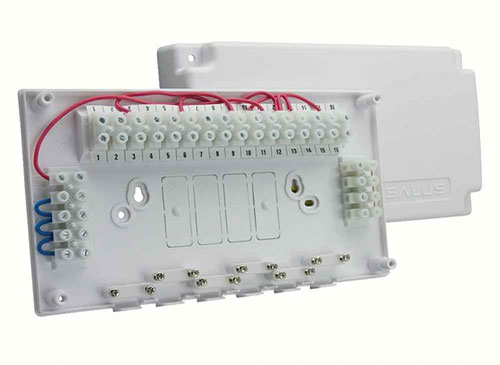So the circuit loading is fine.
Linking terminals together is a good way to avoid cramming things is - in this, for example, you can see that some of the terminals in the top row are linked, but the smaller block on the left shows the technique - you use one side of the terminal block to loop a link from one to the other, leaving you a row of terminals on the other side for individual cables.
I don't know how far to the right in your photo the space extends, but if you want to make provision for future expansion then you could create 4 sections - L/N/E and Switched Live with some unused terminals in each.
Your second example is a real C&N product - it is literally a bog standard 2 gang pattress with a bit of choc-block inside. As you say, no cable grips. Which, to be fair, aren't essential, as if the box is fixed to a surface you can use cable clips to anchor the cables to the same surface. If you were using a box like that for a socket you'd not expect it to have cable grips inside.
Love the price of it though - the same supplier will sell you a box, a blanking plate and a terminal strip for less than half that. I know a couple of quid here or there is not really important, but there are principles to uphold.












